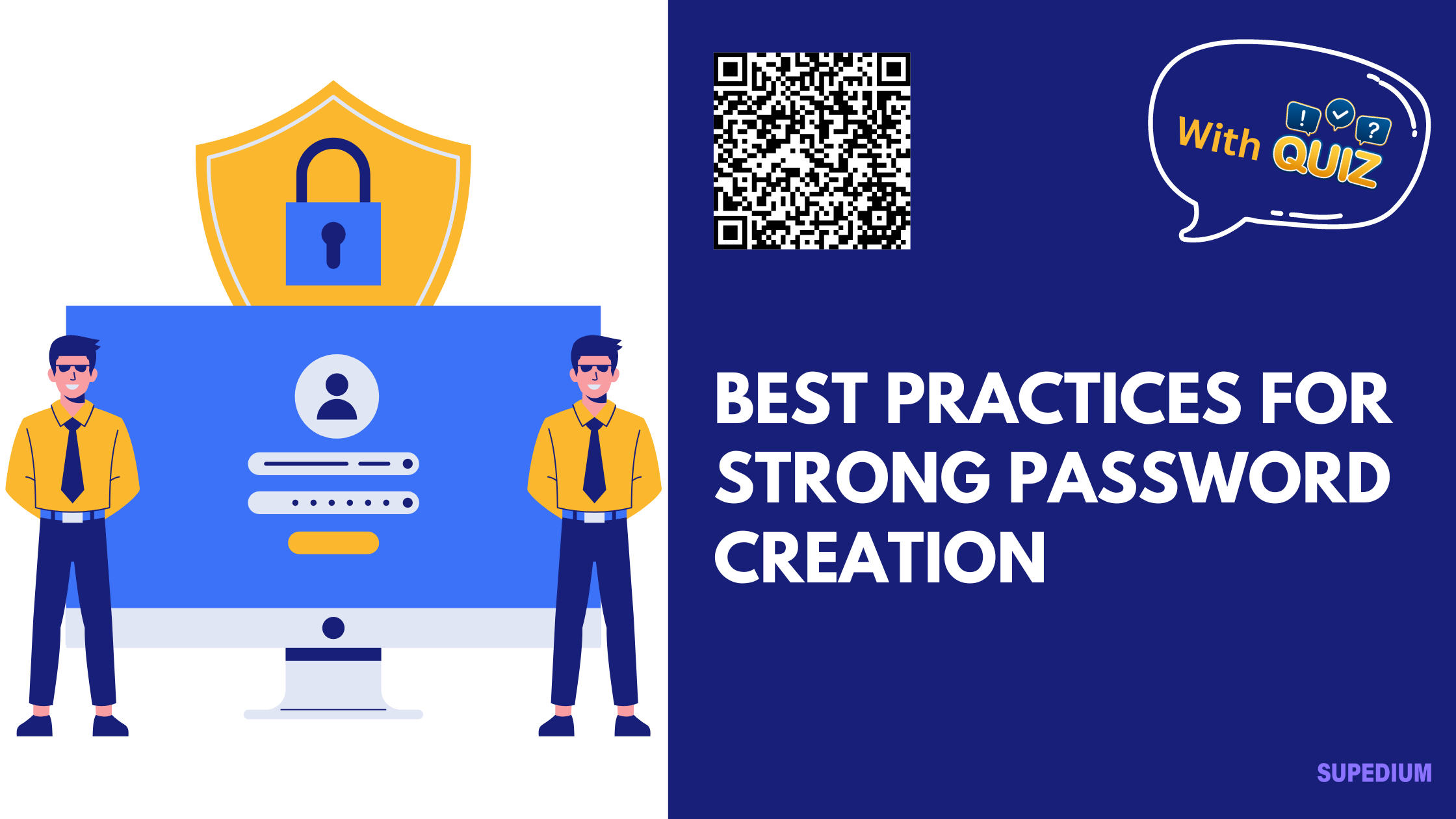Table of Contents
![]()
In today’s digital age, strong passwords are fundamental to safeguarding personal and organizational data from unauthorized access. Password security is a critical component of overall cybersecurity, helping protect sensitive information from breaches and attacks. This article delves into the best practices for creating strong passwords, including technical guidelines, psychological tips, and organizational policies.
Technical Guidelines
Length and Complexity
A strong password is essential for effective security. The fundamental rule is to ensure passwords are sufficiently long and complex. The current recommendation is to use passwords that are at least 12-16 characters long. Complexity can be achieved by incorporating a mix of upper and lower case letters, numbers, and special characters. For instance, a password like “A1r@B7$uK!3n” significantly enhances security compared to a simpler one like “Password123”.
Password Storage
Secure storage of passwords is equally crucial. Passwords should never be stored in plain text. Instead, they should be hashed using secure algorithms such as bcrypt or Argon2. These hashing methods add an extra layer of security by converting passwords into a non-reversible format, making it difficult for attackers to retrieve the original password even if they gain access to the stored data.
Password Managers
To manage the complexity of strong passwords, consider using a password manager. These tools generate, store, and automatically input passwords, helping users maintain unique and complex passwords across various accounts. Popular password managers include LastPass, 1Password, and Dashlane. They offer robust encryption and ease of use, reducing the risk of password-related vulnerabilities.
Psychological Tips
Creating Memorable Passwords
While complexity is key, passwords must also be memorable. One effective approach is to use passphrases—longer sequences of words or sentences that are easy to remember but hard to guess. For example, “BlueSky@Mountain2024” combines random but memorable elements with complexity. Another strategy involves creating acronyms from memorable sentences or phrases, turning them into strong passwords.
Avoiding Common Pitfalls
Common pitfalls in password creation include using easily guessable information such as birthdays, names, or common words. These predictable patterns can be exploited through simple guessing or brute force attacks. It’s crucial to avoid these elements and instead use unique, unpredictable combinations to enhance security.
Organizational Policies
Password Change Policies
Organizations should implement and enforce policies for regular password changes. While the frequency can vary, a common recommendation is to change passwords every 60 to 90 days. Additionally, password changes should be enforced in response to known breaches to mitigate potential risks. This practice ensures that compromised passwords are not a long-term vulnerability.
Training and Awareness
Employee training on password security is vital. Regular workshops or seminars can educate staff about the importance of strong passwords and how to create them. Additionally, awareness of phishing and social engineering attacks is crucial, as these tactics often exploit weak passwords and poor security practices.
Advanced Practices
Two-Factor Authentication (2FA)
To further enhance security, enable Two-Factor Authentication (2FA) where possible. 2FA adds an additional verification step beyond the password, such as a text message code or an authentication app prompt. This additional layer of security helps protect accounts even if passwords are compromised. Methods of 2FA include SMS codes, authentication apps like Google Authenticator, and biometric factors such as fingerprint scans.
Regular Audits and Monitoring
Regular audits and monitoring are essential to maintaining robust password security. Periodic reviews of password practices and the use of tools to monitor for compromised passwords can help identify and mitigate risks. Implementing systems that alert users to potential breaches or weak passwords can proactively address vulnerabilities.
Conclusion
Strong password creation is a cornerstone of effective cybersecurity. By adhering to best practices—such as using complex passwords, employing password managers, and implementing organizational policies—individuals and organizations can significantly reduce their risk of security breaches. Combining these practices with advanced techniques like Two-Factor Authentication and regular security audits ensures a comprehensive approach to safeguarding sensitive information. Embracing these strategies will ultimately contribute to a more secure digital environment.






Be the first to comment